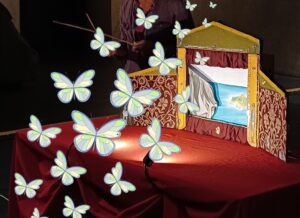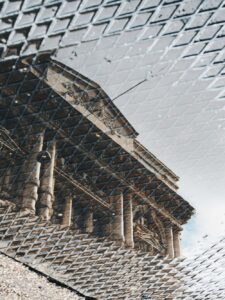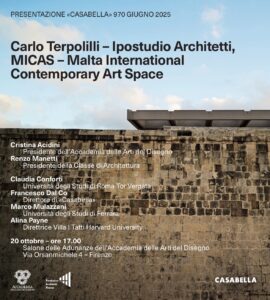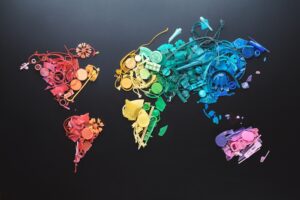The international art fair TEFAF is called ‘the most museum-like fair in the world’. Millions of dollars’ worth of transactions take place here and the total value of the artworks on display reaches EUR 4 billion.
Every year at the end of March, the small city of Maastricht in the south of the Netherlands becomes for seven days a pilgrimage point for collectors, museum and art fund directors, art dealers, art patrons, scientists and experts. Over 50,000 art professionals flock to the fair to see and possibly buy paintings by Van Gogh, Picasso, Rubens, Velasquez and artefacts created over the last seven thousand years. For the opening of TEFAF, hundreds of private jets queue up at the small Aachen airport on the German-Belgian border. In 2025, the fair welcomed more than 17,000 people on its closing days alone.
Inclusiveness and quality
It all started in a very modest way. In 1988, two fairs – Pictura Finé Art, dedicated to Old Masters, and Antiquairs International, specialising in antiques – joined forces under the leadership of art dealer Robert Noortman and organised the first joint exhibition for collectors from the Netherlands, Belgium and neighbouring Germany in the halls of the MECC (Maastrichts Expositie en Congres Centrum). It was called The European Fine Art Fair (TEFAF). It is said that on some days the halls were so quiet and deserted that English dealers played golf.

Photo courtesy of Trinity Fine Art Ltd.
However, after a few years, thanks to the comprehensiveness and quality of the works presented, the art fair began to distinguish itself from the competition, becoming not only a prestigious but also a commercially successful event. In 2025, 273 exhibitors from 21 countries participated in the fair. The exhibition was visited by 370 museum directors, 650 curators and more than 60 boards of directors, representing some 500 museums and foundations.
The motto of TEFAF is ‘Culture is a basic need of mankind’. Today you can find (curl your fingers) artefacts of Egyptian, Middle Eastern, ancient, Islamic, African and Asian art, illuminated manuscripts, rare books, engravings, photographs, jewellery, weapons, furniture, ceramics, textiles, collectible design, antiques, classics and contemporary art.

Photo provided by Landau Fine Art, Montreal, Canada & Meggen, Switzerland
‘We are thrilled by the trust shown by collectors and institutions,’ said Manon van den Beuken, Director of TEFAF Maastricht. – The quality of the works on display is exceptional and the response confirms the art fair’s role as a leading destination for those seeking the best in art, antiques and design.”
The most rigorous examination
Before the exhibition opens, two hundred experts, technicians, art historians and restorers examine every single piece on display. Their task is to verify authenticity, artistic value, origin, state of preservation, authenticity and degree of restoration, to correct inaccuracies in attributions and dating. Each category has its own committee of experts and specialists from the individual masters are also invited. Since 2018, the TEFAF management has further strengthened the selection policy: representatives of galleries and auction houses have been excluded from the expert committee to avoid possible conflicts of interest.
Last year, the vetting process took 4,260 hours. It involved 32 committees of 213 experts representing 126 institutions from 17 countries. There is no information yet on 2025.

Photo provided by Simon C. Dickinson Ltd.
Copies and imitations of antiquities from earlier periods, even if of excellent quality, are not permitted at TEFAF. Non-commissioned objects are collected by the dealers and kept until the end of the exhibition in a special locked storage room. All exhibits are checked by the Art Loss Register, a database of lost and stolen works of art.
These strict selection principles attract collectors with high demands to TEFAF. Perhaps this also explains the price level.
Focus on Old Masters
The most important part of the fair since its inception has been the section dedicated to Old Masters paintings. This year there were paintings by Jan van Kessel, Frans Hals (USD 4.5 million), Jan Davids de Heem, Frans Franken the Younger, no less than ten works by the older and younger Bruegels (USD 1 to 3 million), as well as rare works by Lucas Cranach the Elder (‘Christ the Husband of Sorrows’), Velázquez (‘The Venerable Mother of Heronimus de la Fuente’) and an alleged Michelangelo (sculpture ‘Crucifixion’, EUR 1.8 million).
Also noteworthy is the sketch of the ‘Madonna of the Rosary’ by Peter Paul Rubens. “To work on large canvases the master often attracted students, but the sketches were made by hand,” art history doctor Professor Vadim Sadkov, head of the Old Masters Department at the Pushkin State Museum of Fine Arts, told ‘Profile’. – Therefore, the attribution of Rubens’ sketches is more accurate than that of the finished paintings’.
Red marks
In the first hour after the opening of the fair, one could see convincing red signs on many stands, indicating the purchase of an exhibition. Here are some of the authors and prices:
- Henry Moore (Landau Fine Art Gallery) – EUR 8.5 million;
- Vincent van Gogh (M.S. Rau) – $4.47 million;
- René Magritte (Galerie Lelong & Co) – $3.2m;
- Edward Hopper (Marianne Boschi Gallery) – $2.85 million;
- Georg Baselitz (White Cube Gallery) – $1m;
- Keith Haring (Galerie Ludorff) – 450,000;
- Imi Knobel (White Cube) – €325,000;
- Man Ray (White Cube) – 310,000 euros.
Some works were purchased by museum institutions. For example, the painting ‘Virgin Mary at Prayer’ by Michael Swerts (Salomon Lilian Gallery) was sold for approximately EUR 3.5 million to a Dutch art fund. The painting ‘Landscape with Knights on a Path’ by Albert Cape (Bijl-Van Urk Masterpaintings Gallery) was sold to the private museum Kremer for over EUR 1 million.
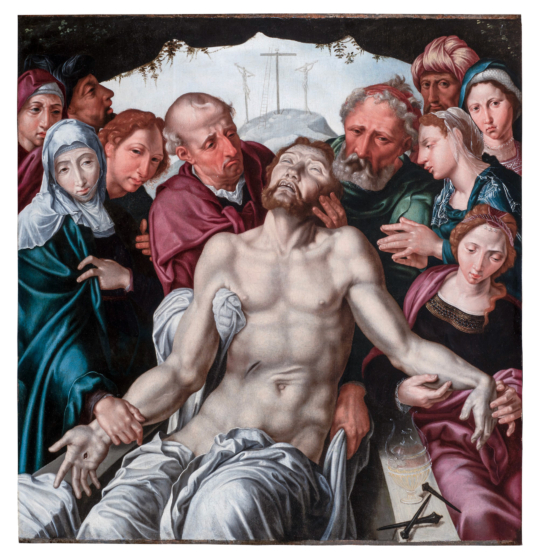
Photo provided by the press office of TEFAF Maastricht
The canvas ‘Kolomerstrasse in Wannsee’ by Max Liebermann (Galerie Ludorff) went to the American museum for €850,000. The canvas ‘The Burial of Christ’ by Maarten van Heemskerck (the central piece of a Northern Renaissance triptych) was sold by the Caretto & Occhinegro Gallery to a public institution for €500,000.
Unlike auctions, most fair transactions are not public, so it is impossible to have complete sales statistics. But we note that even at Christie’s confidential purchases reach 30% and represent a significant share of the total proceeds.
This year’s openings
Masterpieces that have never been in the public domain are becoming a real hunting object. They can only be seen here. Within a week they will either return to the former castle of a hereditary collector or find a new owner. The most favourable outcome is that the canvas will be bought by a museum institution: in this way the painting will become available to a wide public.

Photo provided by the Press Office of TEFAF Maastricht
Gustav Klimt’s ‘Portrait of Prince Wilhelm Nij Northey Dowon’, presented at the fair, has not been exhibited anywhere since 1928. The Austrian gallery W&K (owner) valued it at EUR 15 million. It is not very expensive: in 2023 at Sotheby’s the ‘Lady with a Fan’ sold for USD 94.35 million.
Klimt’s early works usually do not receive such a high estimate as the ‘golden period’, but they allow us to observe the transformation of the artist’s style. The gallery is now negotiating the sale of the painting with two private collectors and two museums.
The Madonna and Child with St. Mary Magdalene by Titian and Girolamo Dente has remained hidden from the public for over 200 years. The masters of the High and Late Renaissance were copied by Mannerist artists at the turn of the 16th to 17th century, so attributing authors such as Titian requires a particularly careful approach.
The painting was presented at the exhibition by Trinity Fine Art, price on request (seven figures). The Titian painting in the gallery exhibition was complemented by the classical sculpture Milone di Crotone by Giuseppe Piamontini.

Photo by Inna Hegai
For the sake of prestige
All exhibitors try to show key works from their galleries. The event is valuable for the participants (who are not easy to reach) first of all as a confirmation of their status, an opportunity to develop communication in the elite professional environment. Some masterpieces are not exhibited for sale, so an overvaluation may indicate the owner’s unwillingness to part with the painting.
Montreal’s Landau Fine Art gallery brought Picasso’s 1965 painting ‘Sleeping’, one of the most important pieces at the fair with an estimated value of $50 million. The work was for many years owned by Picasso’s famous art dealer Daniel-Henri Kahnweiler, who refused to sell it during his lifetime but bequeathed Robert Landau the “right of first refusal” to buy it after his death. “This painting is the heart of our collection, it is not for sale,” said Benjamin Evans, grandson of the founder of the family dynasty.
Other museum-level works on the gallery’s stand included ‘Spanish Dancer’ by Russian-German artist Alexei Yavlensky ($12 million), paintings by Max Ernst, Fernand Léger, Giacometti and Henry Moore’s sculpture ‘Mother and Child’ (sold in the first hour of the pre-show for €8.5 million).

Photo provided by Landau Fine Art, Montreal, Canada & Meggen, Switzerland
It should be noted that sometimes a deal is agreed in advance, with the stipulation that the actual sale will take place at the fair. This is to maintain the prestige of the gallery.

Photo provided by Landau Fine Art, Montreal, Canada and Meggen, Switzerland.
Collecting Trends
The ‘blue chips’ of the 20th and 21st century were well represented at TEFAF. Impressionism, modernism, contemporary art: the most sought-after trends in today’s art market. Prices of works by authors such as Monet, Matisse, Gauguin, Sisley, Pissarro, Degas, Magritte are usually in seven figures.
The New Orleans gallery M.S. Rau, for instance, sold an early Van Gogh painting ‘Still Life with Two Bags and a Bottle’ for $4.47 million. Works by Chagall ($350,000 to $450,000), Miro, Klee, Warhol, Koons, Fontana ($200,000 to $9.5 million), Haring ($450,000 to $4.2 million) and Kusama were repeatedly encountered. Post-war art was represented by works by Richter, Kiefer, Kuninis, Bury, Pistoletto.
The shift of collectors’ interest from historical cultural treasures to modernism and contemporary art was also reflected in the conservative galleries, which included 20th and 21st century works in their exhibitions. The public had the opportunity to experience an unusual aesthetic and cultural experience: to feel how antique objects and contemporary art are combined in one space.
On the Robilant+Voena stand, Francisco Goya’s Portrait of the Marquise de Caballero (EUR 6 million) was juxtaposed with a charcoal-covered canvas by Korean visual artist Lee Bae. The influential Continua gallery presented the famous Chinese action-artist Ai Weiwei, who linked three eras by assembling with Lego pieces an ironic remake of ‘Atalanta and Hippomene’ (€400,000) based on Guido Reni’s 17th century painting on the ancient plot of Ovid’s ‘Metamorphoses’. The art market ‘heavyweight’ White Cube gallery exhibited works by Georg Baselitz, Tracey Emin and the Danish-Vietnamese artist Danh Vo.

Photo provided by the press office of TEFAF Maastricht
Traditional directions in Russian art were exhibited: a portrait by Alexei Kharlamov (€130,000), a Faberge pocket ‘Russian roulette’ in gold with enamels and pearls by master Fyodor Afanasyev (€2.5m), while the Dutch gallery Toth Ikonen exhibited examples of Russian icon painting from the 17th-18th centuries.
In this way, the experience of cross-collecting is formed: mixing different eras, searching for treasures among the diversity of styles.

Photo provided by the press service of TEFAF Maastricht.
The stated aim of the organisers is to increase cultural dialogue between collectors, institutions and galleries from all over the world. The second annual TEFAF Summit celebrated the growing contribution of patrons and private trustees in support of culture. Remaining true to its principles, the art fair is developing and adapting to new market and time demands: increasing the share of contemporary art, experimenting with digital formats, launching non-commercial and special projects. “TEFAF is not only an art fair, but a global intersection between art history, commerce and science,” emphasised Manon van den Beuken, summarising the event.
